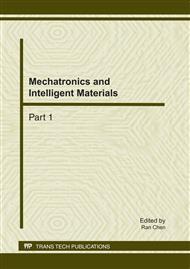p.21
p.26
p.31
p.36
p.40
p.48
p.57
p.62
p.68
Modeling and Simulation of Nonlinear Combination Disc-Spring Vibration Isolator for High-Speed Press
Abstract:
With its variable stiffness, capability to provide friction damping by itself, and space-based adaptive performance, the disc spring, by replacing the cylindrical helical spring extensively, has found wide application in fields like aerospace, metallurgy, architecture, machinery and so on. For the nonlinear combination disc-spring vibration isolator, the mathematical model is established in this study on the basis of classical disc spring theories. The simulation results of the combination vibration isolator under simple harmonic excitation and the effects of damping ratio and different types of load on the vibration isolator are explored in depth, the findings of which help to lay a solid foundation for parameterization and serialization of the nonlinear combination disc-spring vibration isolator.
Info:
Periodical:
Pages:
40-47
Citation:
Online since:
February 2011
Authors:
Keywords:
Price:
Сopyright:
© 2011 Trans Tech Publications Ltd. All Rights Reserved
Share:
Citation:


